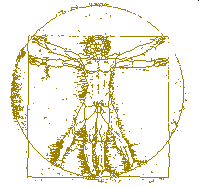The problem I wish to address is how it is possible, if a picture has its logico-pictorial form in common with what it depicts, for a picture to represent its subject incorrectly. At first glance, it seems that Wittgenstein’s insistence that “There must be something identical in a picture in what it depicts to enable the one to be a picture at all” (TLP 2.161) would ensure that all pictures are correct, or they do not even count as pictures.
What ways may a picture be said, in ordinary language, to represent its subject incorrectly? Of course, there are at least as many ways to misrepresent something as there are to represent it accurately, so our real concern is what kinds of ways a picture can be false. There are two possibilities: either 1 It may depict a possible state-of-affairs that does not actually exist, or 2 It may depict an actual state-of-affairs whose logical form is incorrectly laid out. These alternatives are mutually exclusive. It is not possible, that is, for the subject to be a possible state-of-affairs that does not actually exist and for the logical form of that state-of-affairs to be misrepresented, because if the subject is not an actual situation, whatever possible situation it represents, it necessarily represents accurately. To say it misrepresented one possible situation would be to say that it did not represent that state-of-affairs at all, and either that it accurately represented another possible situation, or that what it represented was impossible (but all pictures represent possible states of affairs). In the absence of an existing situation to which to compare the picture, whatever the picture does depict, it depicts accurately, or it does not depict at all.
So the question is whether we are to take ‘what a picture depicts’ to be 1 a possible state- of-affairs or 2 an actual state-of-affairs. The Tractatus does not answer this question as easily as it seems to, as there are conflicts which arise either way.
If pictures represent possible states of affairs then they can have no relation to actual states of affairs, making the use of pictures an entirely academic concern of no practical value. When we use pictures, we sometimes want to use them to describe the real world (to say ‘this is how it is’), and sometimes to describe a possible world (say, to illustrate that this one could be better, or that it isn’t so bad). To make such a picture refer to reality, it would be necessary, in addition to the picture itself, to have some indication that the picture is intended to describe the real world, not merely some possible world, or vice versa. That is, one would have to present a picture and say ‘This picture is true’ (if you will, on the frame) or else adopt the convention of TLP 2.15 and 4.022 assuming that every picture is intended as true, unless perhaps it is accompanied by a disclaimer. This assertion or disclaimer could not be a part of the picture, since then it would mean only that ‘it is possible that this picture describes the real world,’ which we already know anyway from the fact that it is a picture, when what we want to know is whether the picture actually describes the real world, or at least whether it is actually so intended. But neither could the assertion or disclaimer appear on the frame, as it were, or in the margin, because following Wittgenstein, such an assertion or disclaimer would itself be a picture-proposition: hence it could only represent a possible state-of-affairs, so another assertion or disclaimer would need to be tacked on, and another, ad infinitum.
But if a picture represents an actual state-of-affairs, then to say that the logical form is incorrectly laid out is to say that what we would like to call a false picture is not really a picture at all. Since what a false picture depicts does not exist, it cannot be an actual state-of-affairs.
These problems arise from an ambiguity in what a picture represents. There are two kinds of representation at issue a [=2.131] elements of a picture represent particular objects, and b [ 2.202] the whole picture represents a certain relation between those objects. Let us take as an example the picture-proposition that ‘The Sun revolves around the Earth’ (or ‘sRe’ for short). Following a we can say that ‘sRe’ is a picture of the Sun and the Earth, but incorrectly describes their relation. Following b we would say that ‘sRe’ accurately represents the possible state-of affairs that the Sun revolves around the Earth; but we would have to admit that since the Sun does not revolve around the Earth, ‘sRe’ is not a picture of the real solar system -- or even worse, that the proposition does not refer to the Sun and Earth at all, but to some imaginary sun and earth (lower case) which behave differently. One is a picture of the solar system that is incorrect; the other is a correct picture of something else entirely. Is the choice between a and b merely one of personal taste? Perhaps, but it seems to me that what the ancients meant when they said ‘sRe’ was sRe (Or even sRe!), not ‘there is a possible state-of-affairs in which sRe,’ just as when we say ‘eRs’ we mean eRs, not ‘maybe eRs.’ If we, so to speak, mean what we say, then b is not an option.
Taking definition 2a leads us into further difficulties. By 2a, a picture represents what its elements refer to in the real world, so pictures can be false and still be pictures. For example, by 2a ‘sRe’ is a picture of the Sun and the Earth because ‘s’ names the Sun, and ‘e’ names the Earth; its falsity comes from the fact that the revolving-around relation ‘R’ does not hold between the Sun and the Earth. But though this problem is solved, another creeps in. The new problem is that according to Wittgenstein, the name goes proxy for the object it names: ‘A name means an object. The object is its meaning’ (TLP 3.203). But nothing can stand in surrogation in the proposition. The names cannot go proxy for the objects they name, because if they did, propositions containing fictional names would not be propositions at all. Instead, there would be null references for every fictional name, and if the sense of a name were its reference, the sense of the proposition would be null as well.
A tentative solution can be found if we understand a picture’s subject or reference from its elements - - they refer to objects, to what the picture is about – and if we understand its sense to be the relations among those elements. With this distinction between reference and sense in hand, we can say that a picture is false if the symbols in the picture refer to real objects, but the symbols stand to each other in a different relation than do the objects to which they refer. This scheme solves the problem of how to make a depiction of a possible state-of-affairs refer to reality: there is no need for a separate proposition asserting or denying that a picture refers to reality, because what a picture refers to is implicit in the symbols that make it up. But what if the symbols do not refer to anything?
This scheme is not sufficient alone, because it only describes how pictures about real objects can be false, and says nothing about how pictures of fictitious objects can be false (unless perhaps they are all to be considered false, by virtue of the fact that the sense they depict is not referred via symbols to real objects). But notwithstanding reference failure, it is possible for fictional names to occur in true propositions, such as G. E. M. Anscombe’s proposition ‘The Greeks worshipped Zeus.’ That fictional names can occur in meaningful propositions serves to illustrate that names serve a dual function. They function both as stores of meaning and as references -- both as placeholders and placefillers - - and the first function is not nullified by the nullification of the second. Despite the fact that Zeus never existed, it is nonetheless true that ‘The Greeks worshipped Zeus.’ Names, whether of real or fictional objects, can be bound to properties and set in relations to one another, so that the sense of a name includes all of the properties ascribed to it so far. A name may or may not refer to a (real) object, but the same name always means whatever properties have been ascribed to it. Otherwise, the answer to ‘Who worshipped Zeus?’ would be the same as to ‘Who worshipped Ramses?’ and the answer would be ‘the set of all people who worshipped nonentities.’ But the correct answer to ‘Who worshipped Zeus?’ is ‘The Greeks,’ (and not the Egyptians). Furthermore, fictional names are not merely particular names for nothingness that cannot be interchanged, but also storehouses of properties and relations (or rather, that they cannot be interchanged shows that they are storehouses). That is why it is correct to answer ‘Who did the Greeks worship?’ with ‘Zeus, the god of thunder, who was the son of Kronos, and who blackened the skies when Hektor killed Patroklos’ – because all of these properties and relationships have been assigned to the name, even though no god corresponds to it. Names have bindings to relationships and properties. Words are sometimes used to assign bindings, and sometimes to remark on them. A remark has a truth value, but an assignment has none: it just states what is to be considered the case from now on (or at least until the next assignment).
Now we are in a position to analyze false pictures of fictitious objects. For example, it is false that ‘Athena destroyed Achilleus.’ Up until now, we would have had to say that ‘Athena destroyed Achilleus’ is false because neither ‘Athena’ nor ‘Achilleus’ refer to anything. But with the concept of property- and relationship- assignments, and with a certain small knowledge of Greek mythology, it is possible to say that ‘Athena destroyed Achilleus’ is false, because not only did she not kill him, but on the contrary, she looked after him carefully: the relationship that the picture-proposition describes does not correspond to the relationships that have been assigned to Athena and Achilleus. So at last we are in a position to analyze false pictures of both real and fictitious zseuikopads.
1 Often the meaning of the name goes unused in a particular proposition, as for instance when the name is used only extensionally, for its reference, but this is different from saying that the name loses its associations - - they are merely not used.
Essay
Title
FALSE PICTURES
OF REAL AND FICTITIOUS OBJECTS
Synopsis
Corrects a technical problem in Ludwig Wittgenstein’s “Picture Theory” of language
Topic
Philosophy of Language
ShortTitle
False Pictures
Date
November 12, 1986
Professor
Prof. Heidi Ishiguro
|
Illustration2
Illustatration1
GraderQuote
Copyright © W. Murray Sexton. All rights reserved.
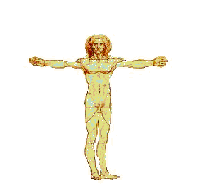
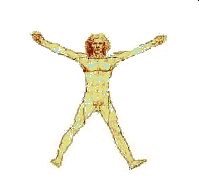

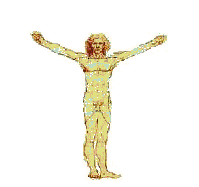
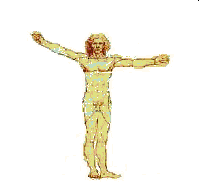
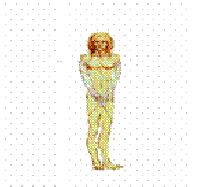
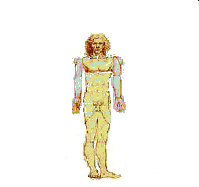
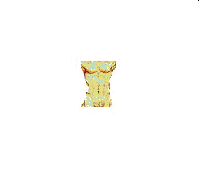
TM
